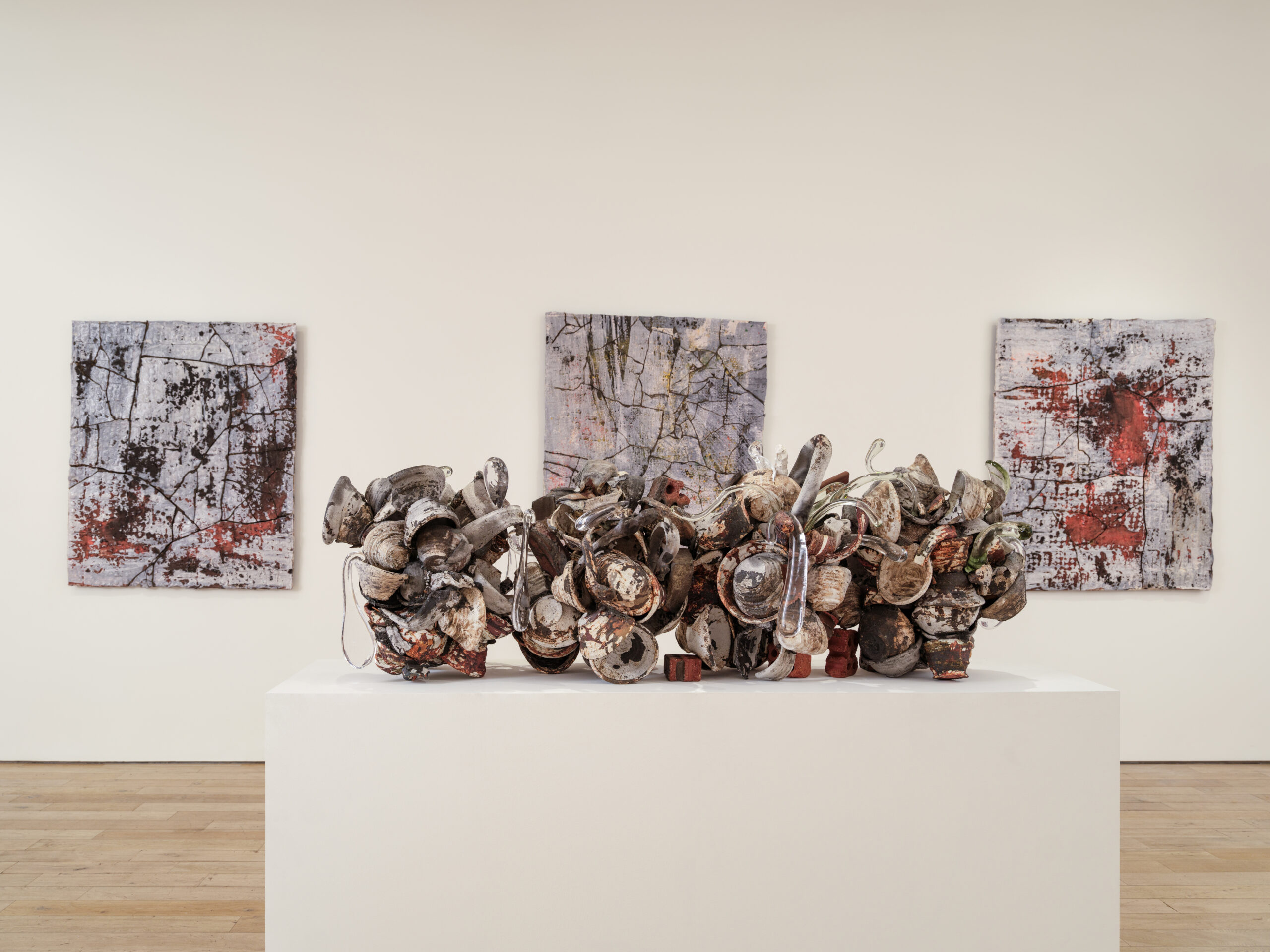

HB381 Gallery
381 Broadway
New York, NY 10013
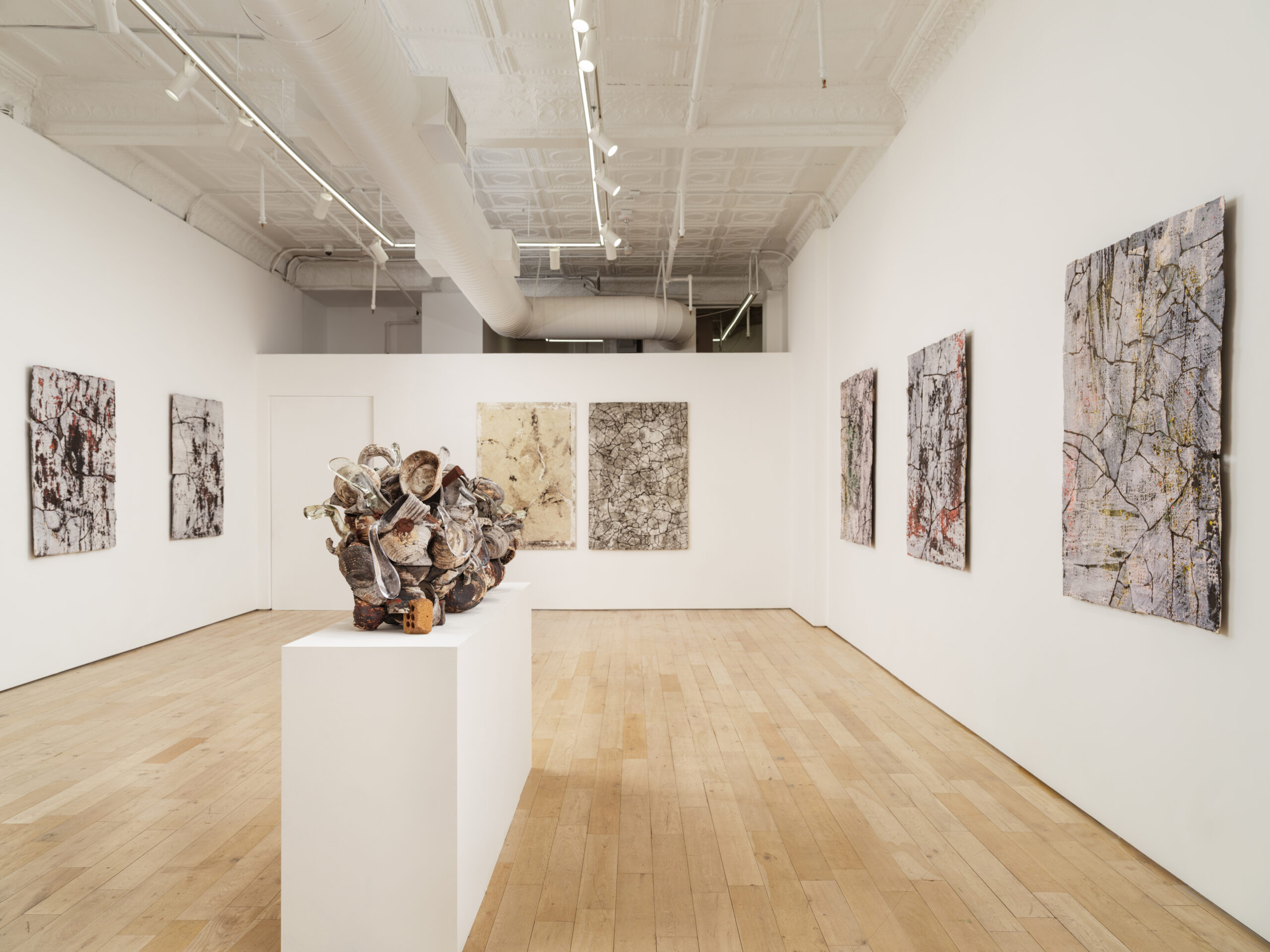
The biting Arctic air has arrived. The city's streets, typically bustling and buoyant, are now uninviting, dwindling as residents hastily dart home, anxious to huddle by their heaters, yearning for warmth to blanket the state once again. But alas, winter is here, and with it, a new reality: seeking refuge beneath duvets and layers upon layers, stifling muttered curses against the cold. Yet for those without the luxury of southern getaways, resigned to their dreadful fate of frigid endurance, a respite at HB381 Gallery’s current exhibit, Winter Tales, might honey your perception and romanticize what winter could be.
A trip to Finland, perhaps, where winters—albeit much crisper and darker—are softened by the visual splendor of snow carpeting the ground, frosting smeared atop trees and buildings, and glossy lakes freezing into glassy mirrors. In contrast to the urban dwellers deprived of nature, where snow barely reaches an inch high and lasts but a few hours—a train ride to see Pekka Paikkari’s works might take you further, a trek into his splintered and poetic interpretations of the Finnish wintry landscape, where he was born and still resides.
Mounted on reclaimed wood are sizable terrestrial clay canvases—tectonically fractured and icily glazed—seemingly unearthed from the Nordic grounds and directly installed onto the walls of the Tribeca gallery. Webs of glacial cracks animate the glazed stoneware, teleporting you to a parched land with soil split into dramatic mazes, skeletal tree branches frozen and frail, or an ice sheet cracking under each tentative step.
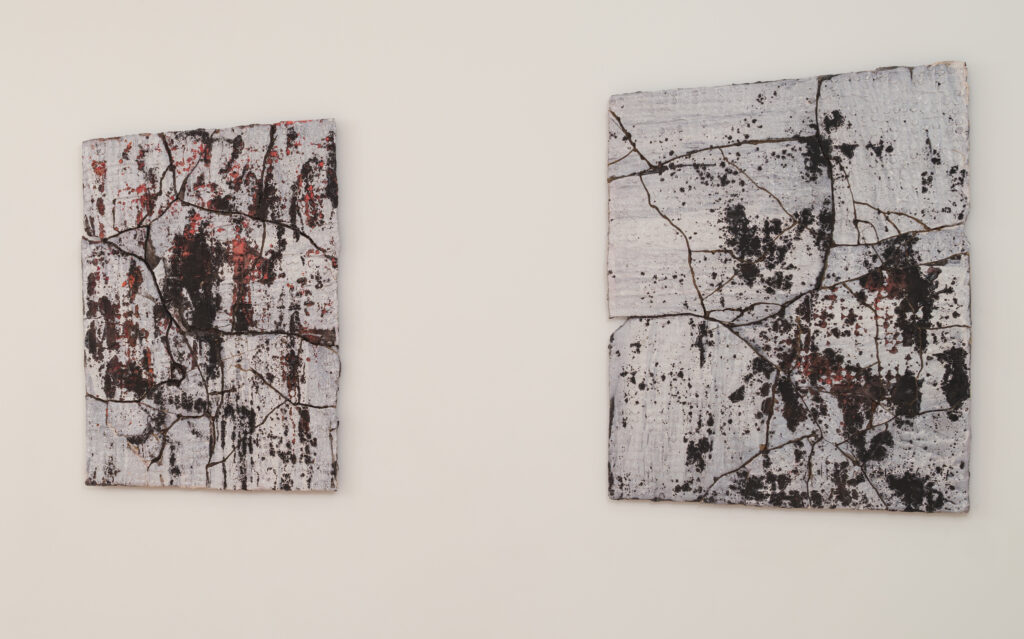
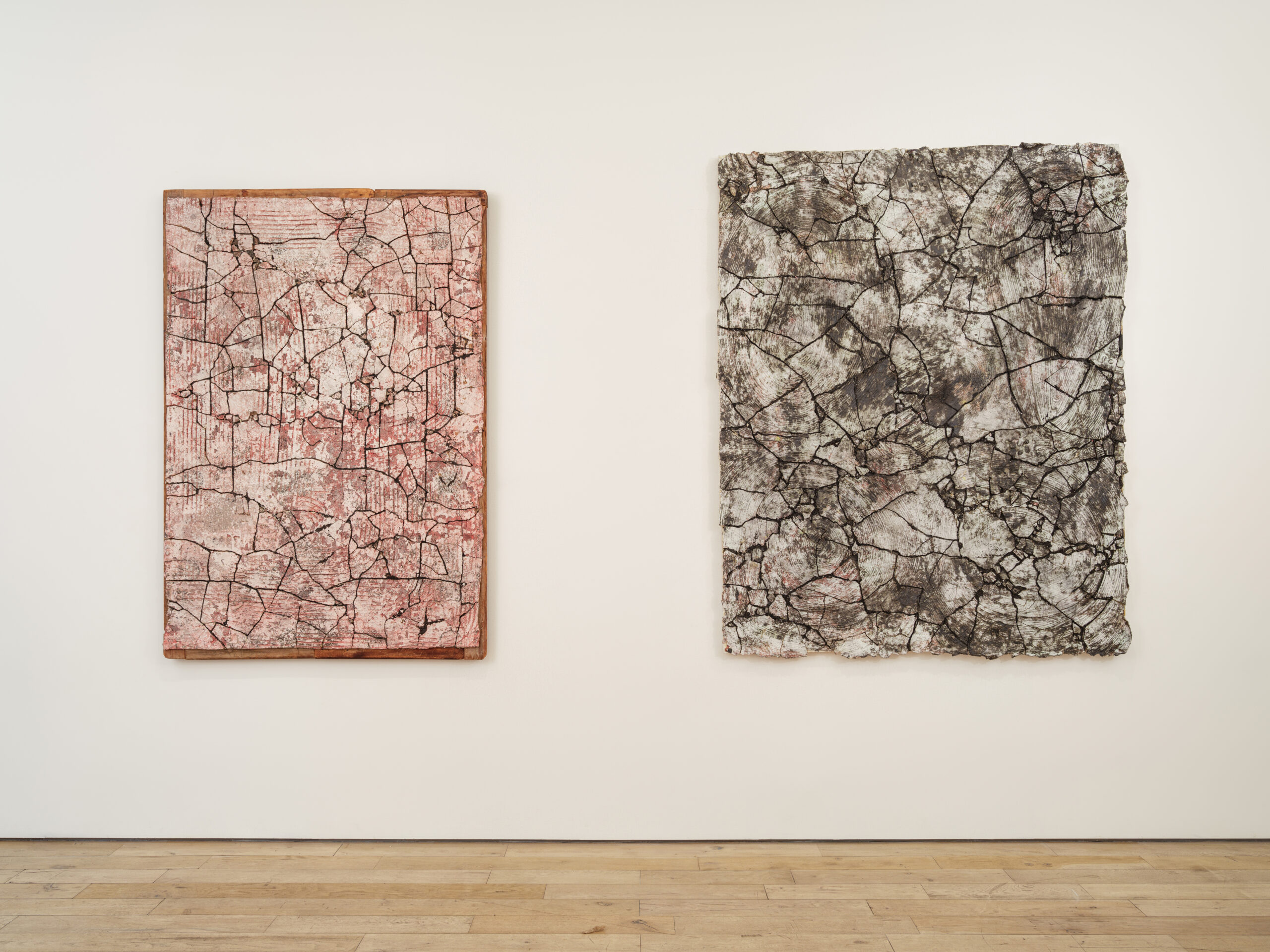
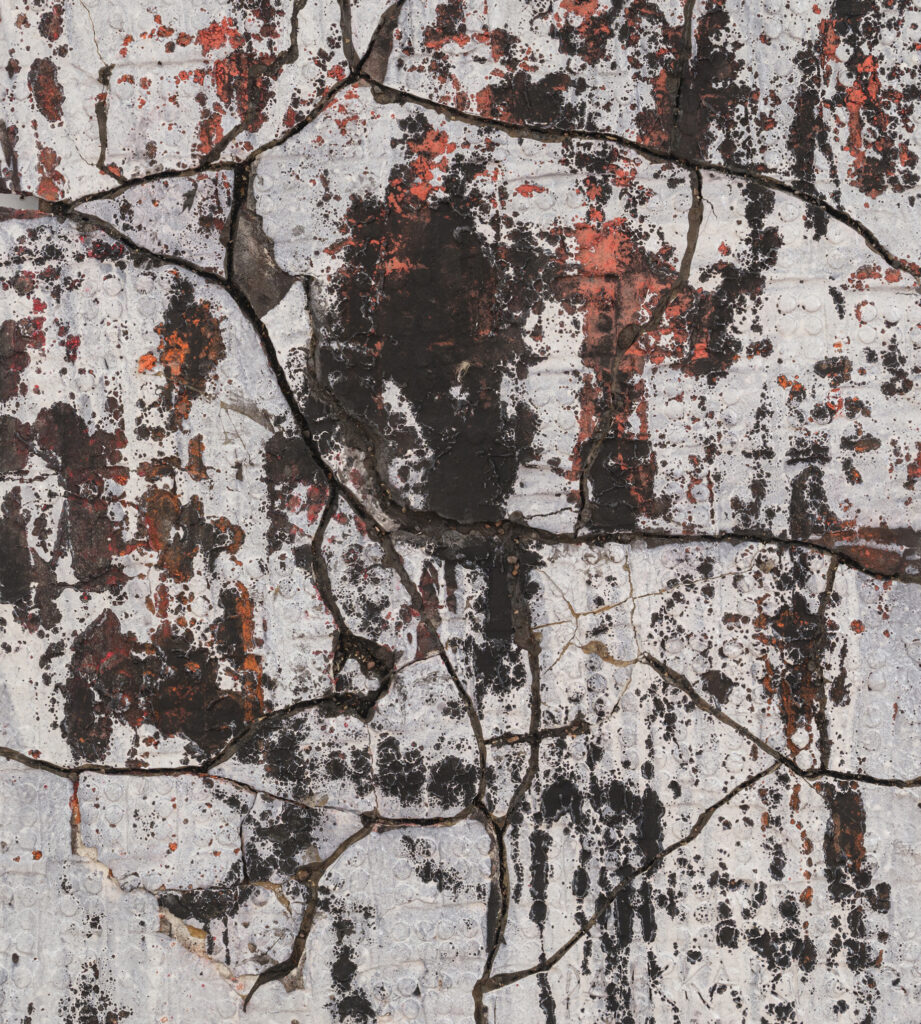
The cracks aren’t ornamentally melded or gilded as practiced in kintsugi. Rather, they appear as an abrasive aftermath, still alive and vulnerable to further shattering. Although alarming, the confrontational clefts are contrasted by spiraling lines scarred into the surface—hypnotically serene and evocative of Japanese Zen gravel patterns or the growth rings of a tree. On other terrains, you see crystallizing textures galore: embosses and bruises stamped onto the clay, along with muted shoe prints tracking the surface, hinting at human presence and construction. The final glaze, a topping of thick aluminum oxide, is scraped to reveal underlayers peeking through, akin to the skin of freezing water or condensation collages on a windowpane.
Winter Tales tells the story of seasonal change. Ruska pigments—orange, yellow, green, and red—are fossilized, resembling frosted foliage, as seen in Shades of Autumn (the exposition of the show, if you will) and After Autumn. The narrative then shifts to Silence of the First Snow and Haiku, featuring muddy brick and black tones, and Rowan Berries, named after the native tree that sustains famished birds in winter, its vibrant red clusters visible from the artist’s window at home. Paikkari isn’t overly concerned with representing any specific thing but rather with capturing the visceral evocations of winter and the visual wonders of natural phenomena.
Clay, a material so abundant in the banks and shores of the earth and so vital in sustaining civilizations for centuries, has matured to the technicalized point of automation. Paikkari himself was a contributor to this industrial ecosystem. In the early 1980s, he worked as a prototype maker at the Arabia Ceramics Factory in Helsinki, where he endlessly threw perfect pots and bowls.
One happenstance event—leaving a sheet of clay on the ground overnight and finding it cracked into jagged fractures the next morning—became a revelatory moment that sparked a hyperfixation lasting decades. Perhaps it was his repressed creativity, caged within the rigid framework of his job and the rules of clay he had abided by for so long, or maybe an inexplicable enlightenment that transformed his relationship with nature and clay, awakening something within. Either way, it catalyzed him to relinquish all control. “I was able to forget all the technical problems in ceramics,” he recounts, “so I [became] free of all the rules I had before.”
Deliberately unlearning twenty years of cultivated clay knowledge, he spent the next twenty years learning how to surrender to his intuition and the laws of nature that guide it. He explores the “smallest unit,” as he calls it— the purest representation of a universal concept or principle—
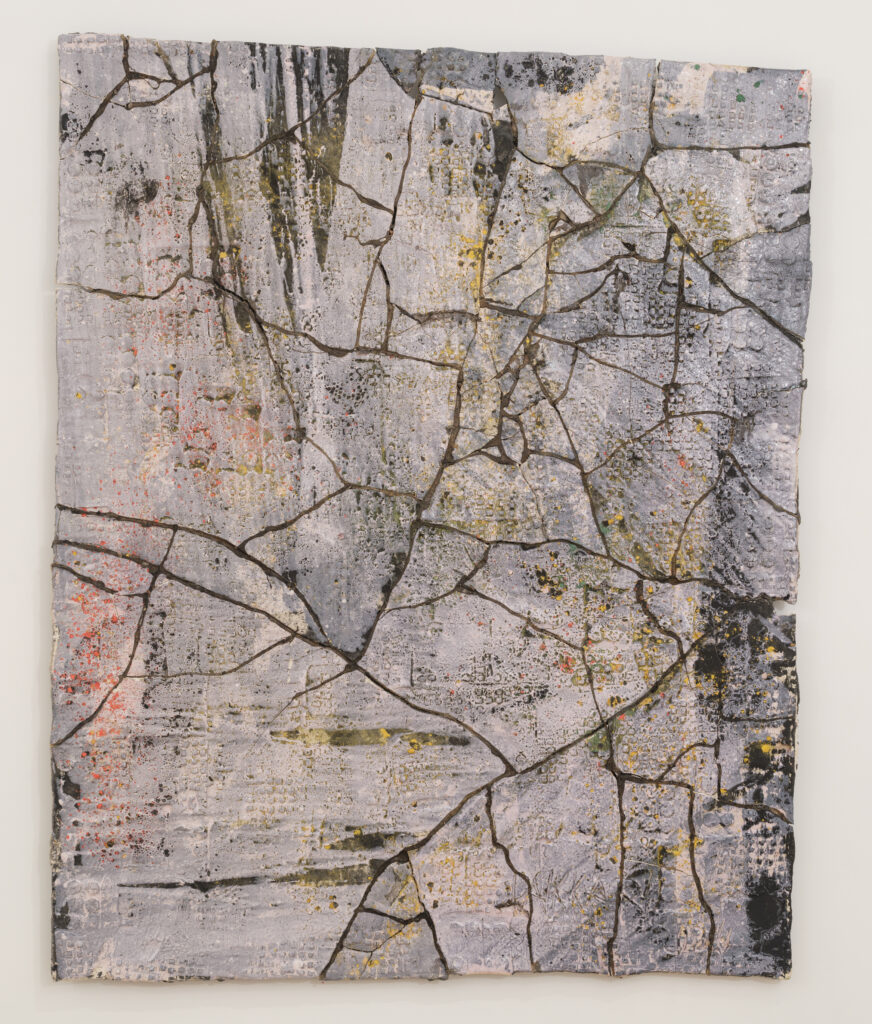
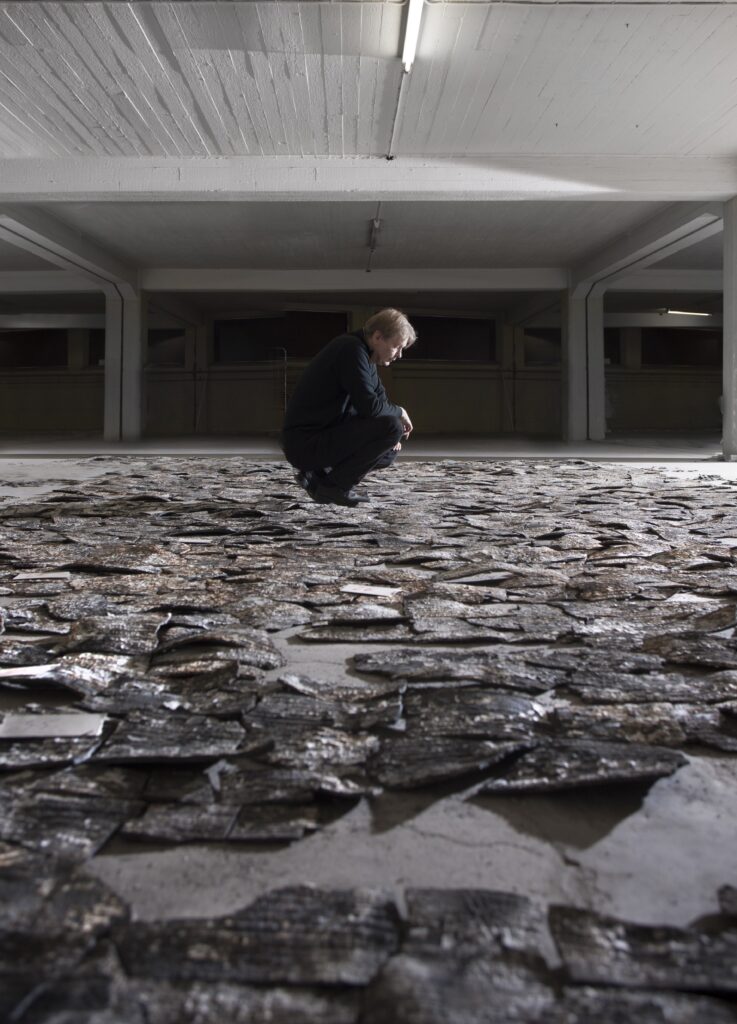
discovering its infinite variations to the point where the process becomes instinctive. “Not too much thinking [about] what I’m doing,” he says, “because that’s the enemy of the creative process.” He begins by slapping kilos of clay onto the ground, flattening them with his feet until they coalesce, then tracing lines with a fork. Racing against the ticking timer of drying clay, he grabs forty- to sixty-year-old bricks, previously scavenged from the sea near a large brick factory (the same bricks also incorporated in Odd Perennials, the centerpiece of the exhibition), and stamps the disintegrated, deformed blocks onto the surface.
He continues with washing and splattering pigments and oxides onto the surface using rollers, brooms, and mops. Layers, reaching up to four or five, are intermittently scraped to remove parts of the glaze. The fast pace leaving no room for thought—automatic and responsive: “I try to be quite fresh, and I have to finish the work in hours. That’s the way I think it should be.” Finally, the clay is left to dry on the ground, uncovered, undisturbed, and slowly yielding to nature’s breath.
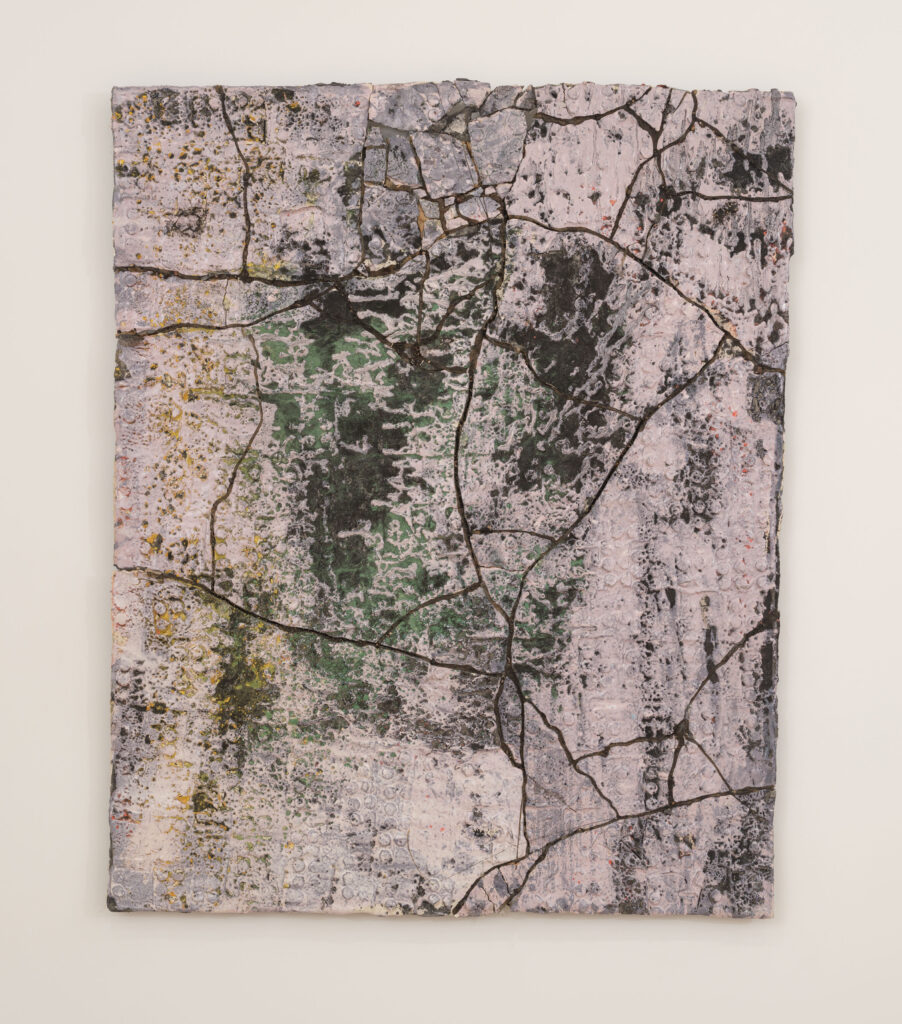
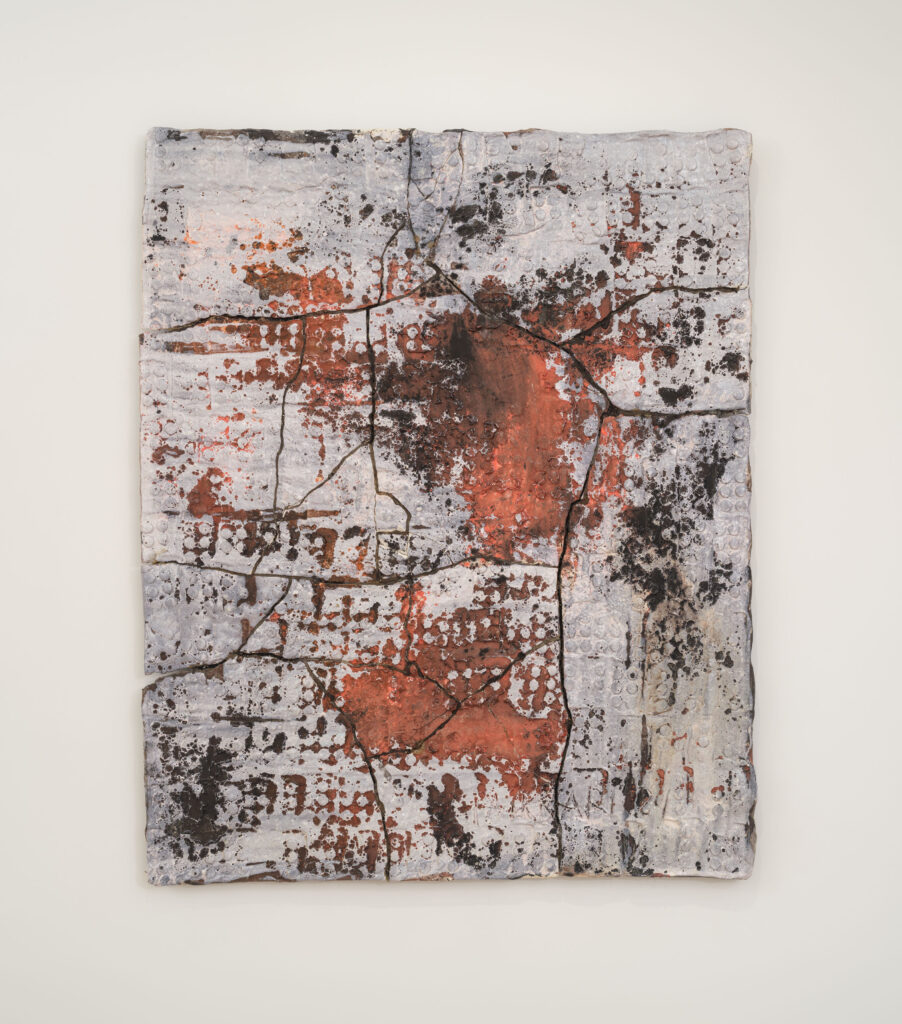
Much like his process, Paikkari’s second exhibition with Hostler Burrows came together quickly, with just three months to prepare (minus one for shipping the pieces to New York). Fortunately, themes of winter in his works had long been brewing—a lifelong reflection shaped by decades spent in harsh Finnish winters, where, in some northern areas, the sun doesn’t rise above the horizon at all. "I have a love/hate relationship with the winter because we have to stand it. It [comes] once a year, and it is quite a rough time. But you can also enjoy this. I think that is the only way to survive."
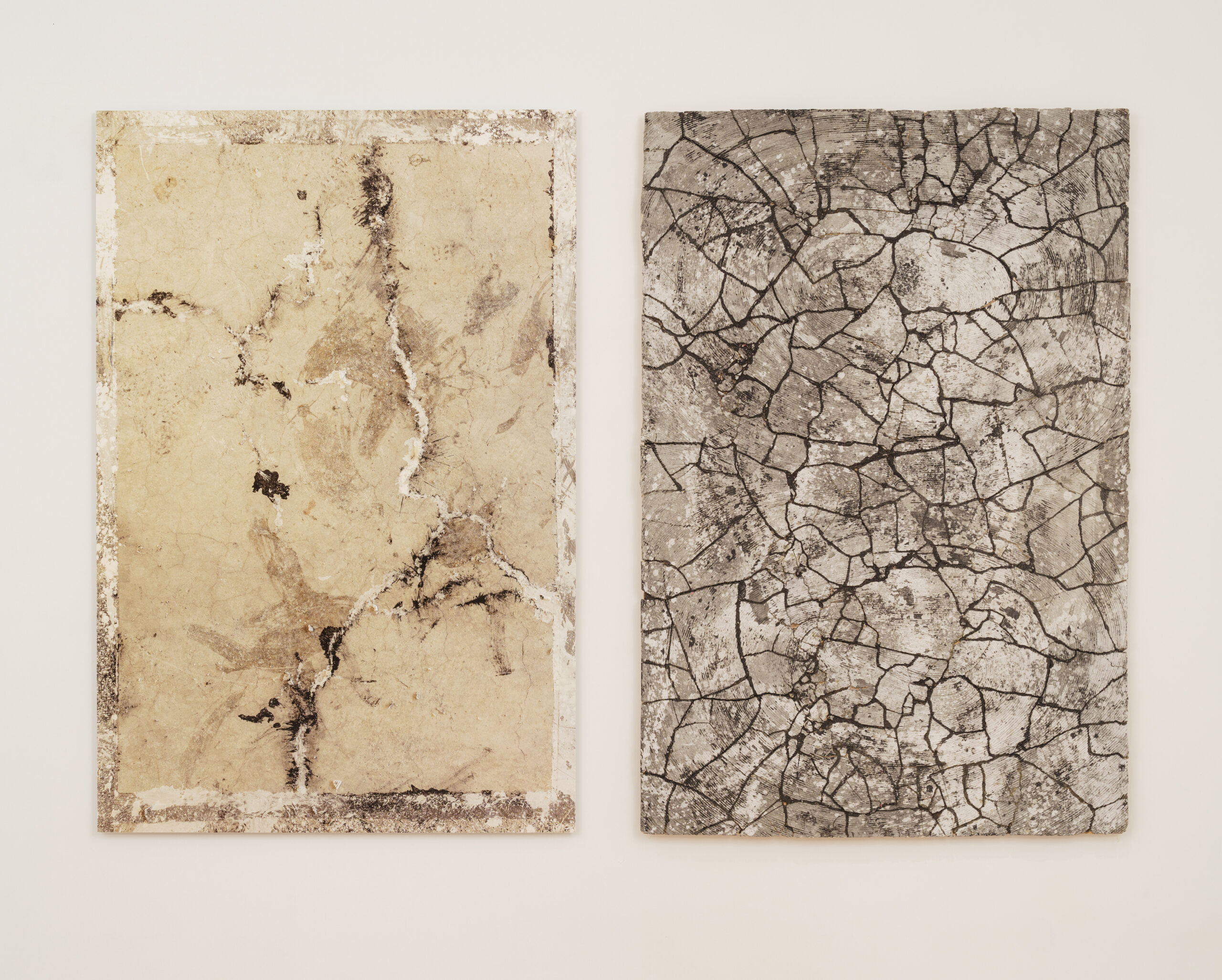
Winter in New York is peaking. Trees rattle and wrestle the cold, rats scuttle to nest in our walls, and humans hibernate—if lucky—or endure the whirling slaps of wind. Skin becomes bone-dry, splitting into crimson cracks; joints creak and pop, and energy is sapped by fatigue. And yet, Paikkari sees harmony in nature’s dormancy, its brutality, and its cycle of death giving way to life, life emerging from death once again. While the weight of winter chips at our mental and physical limits, he invites us to find beauty in this cold, in endurance, and in the collective will to survive until spring.
Visit HB381 Gallery at 381 Broadway, New York, NY 10013, and learn more about the exhibition on their website.
